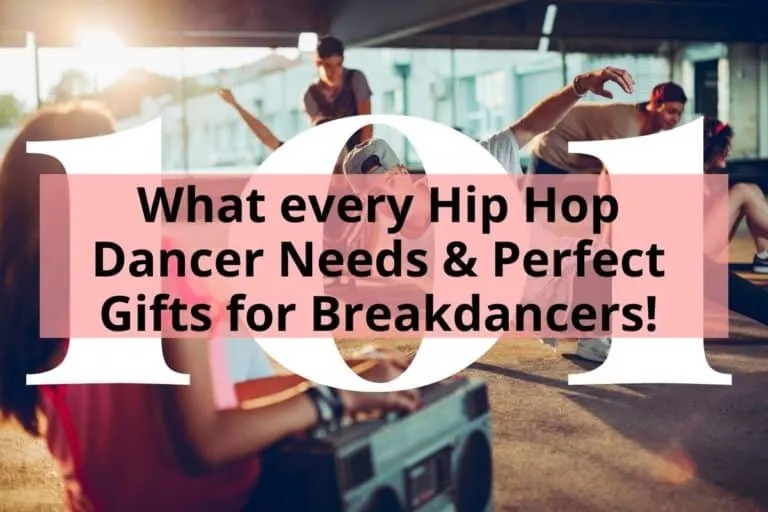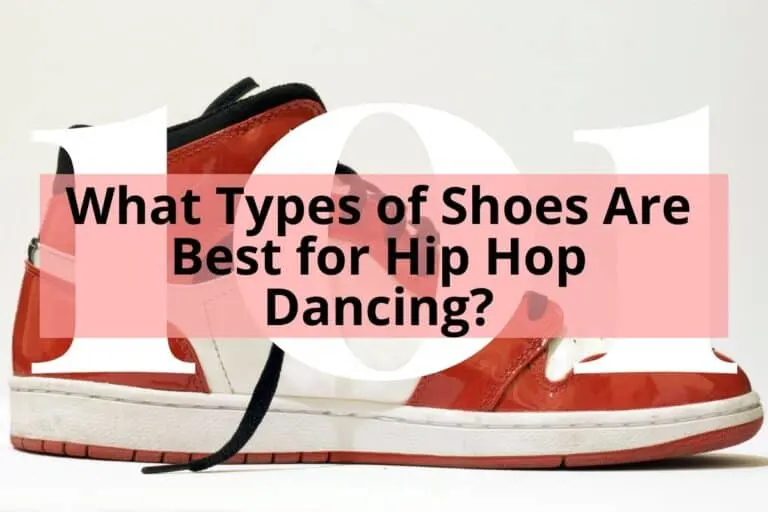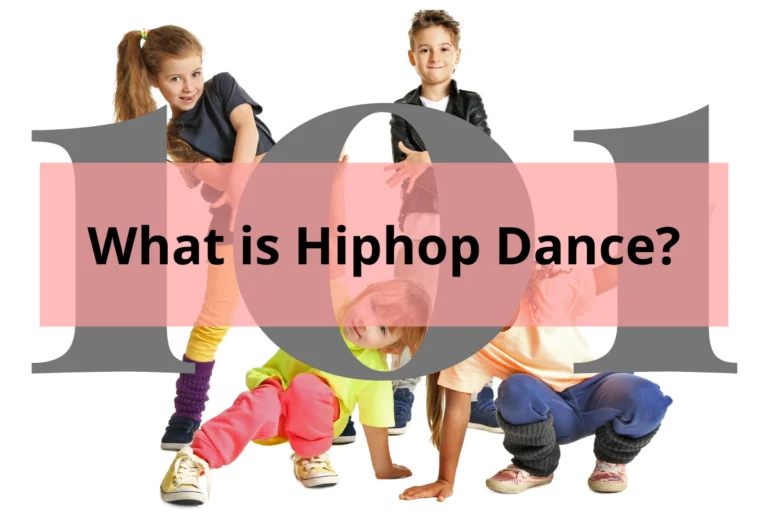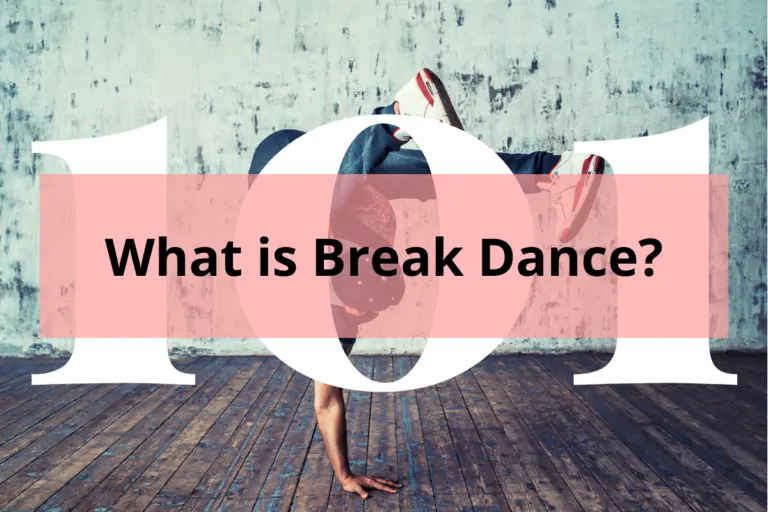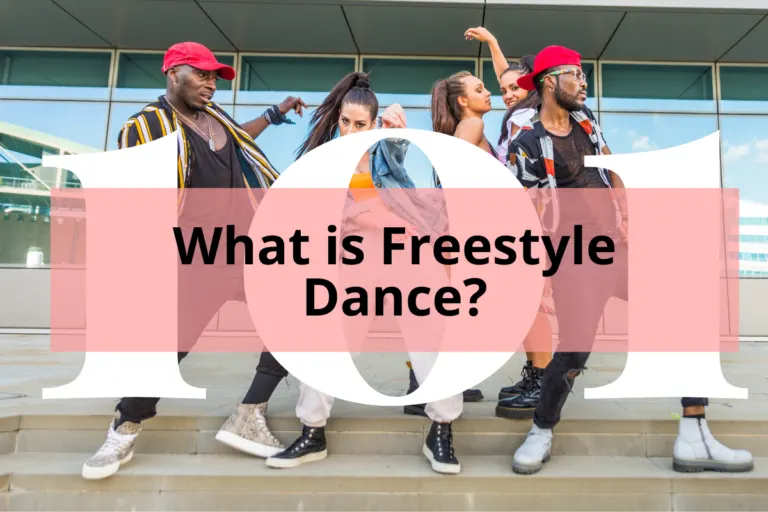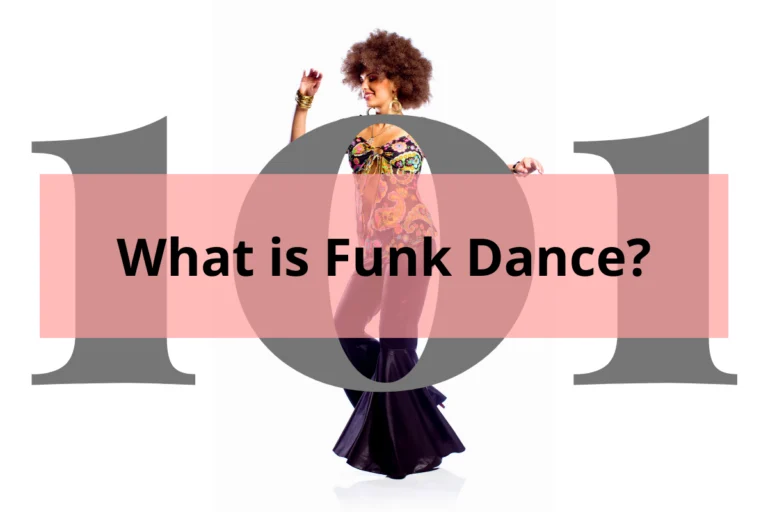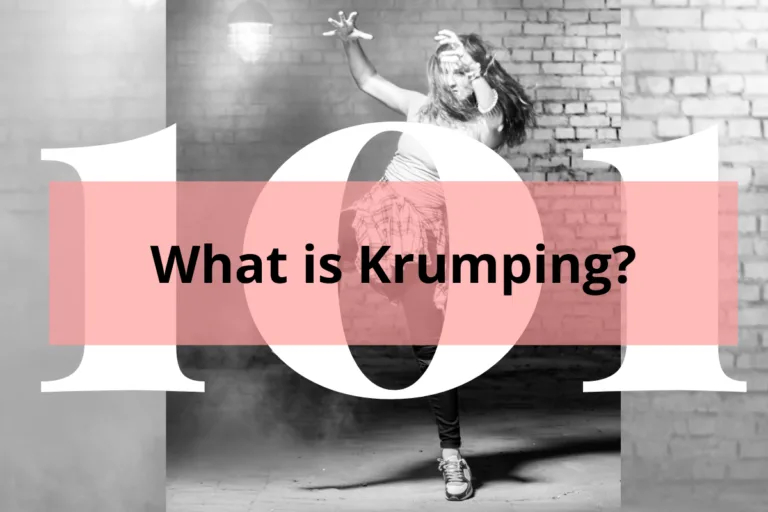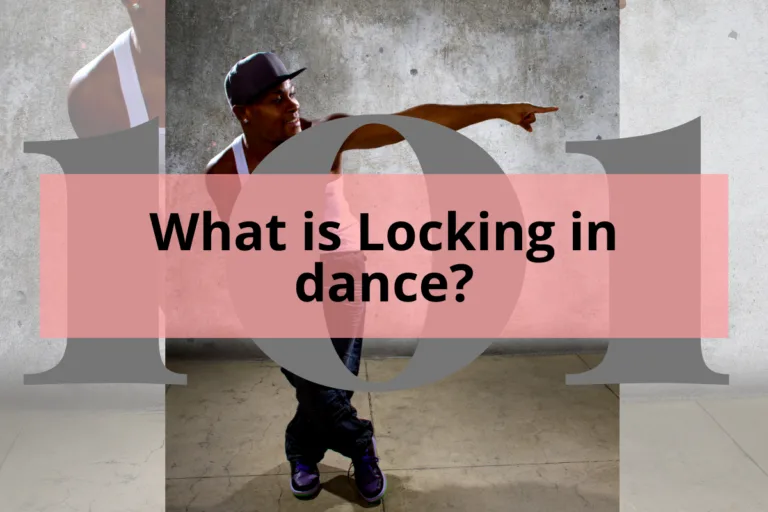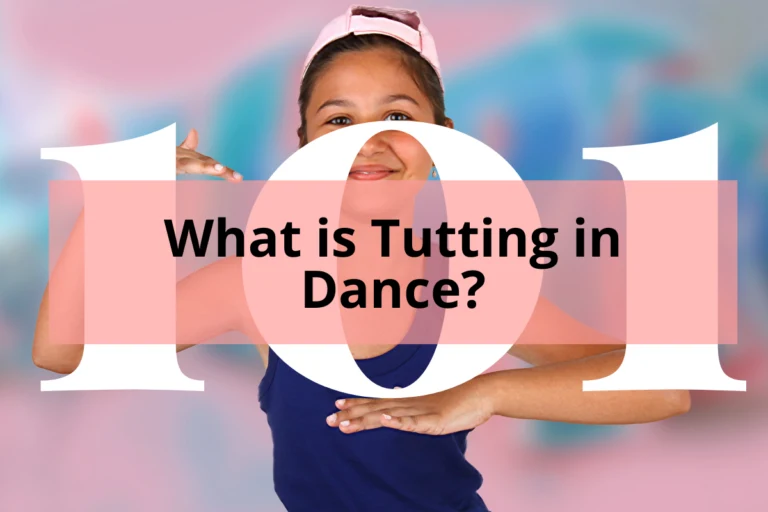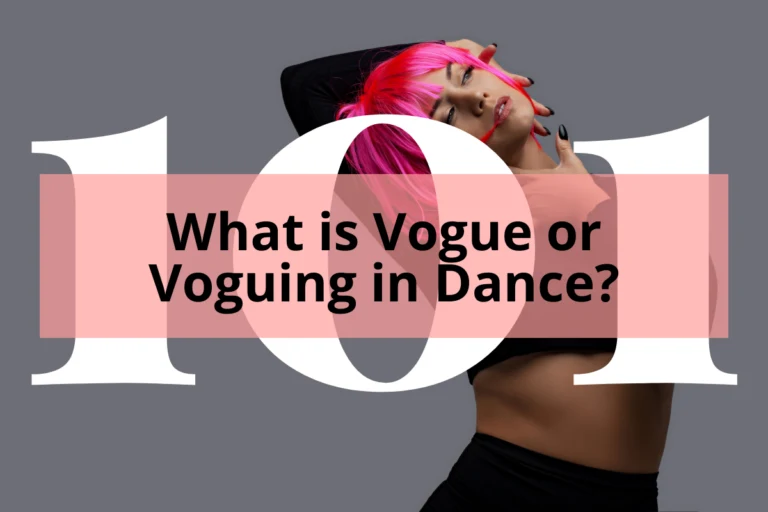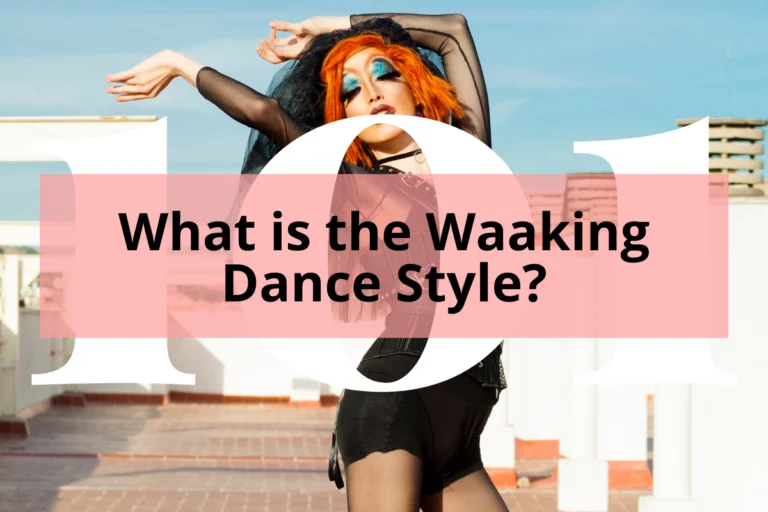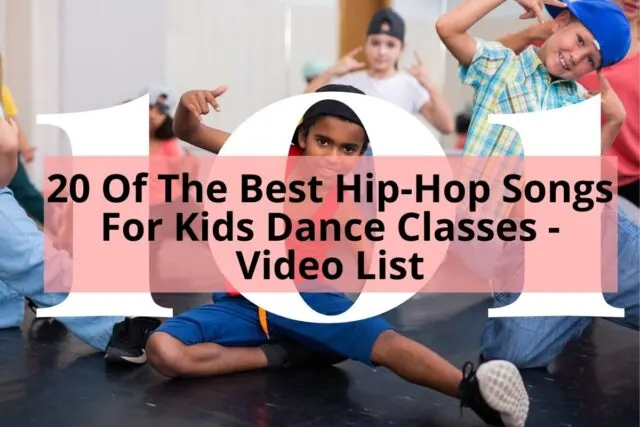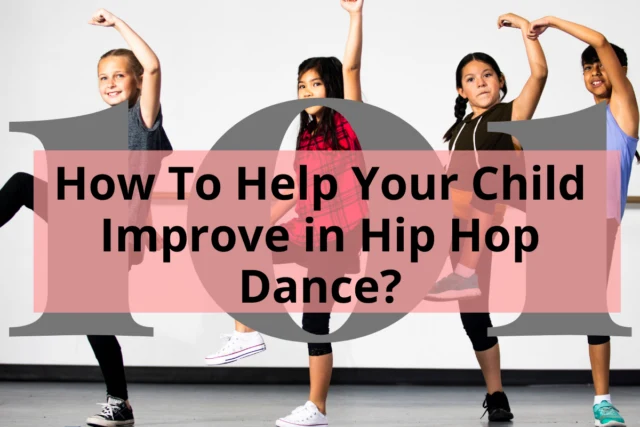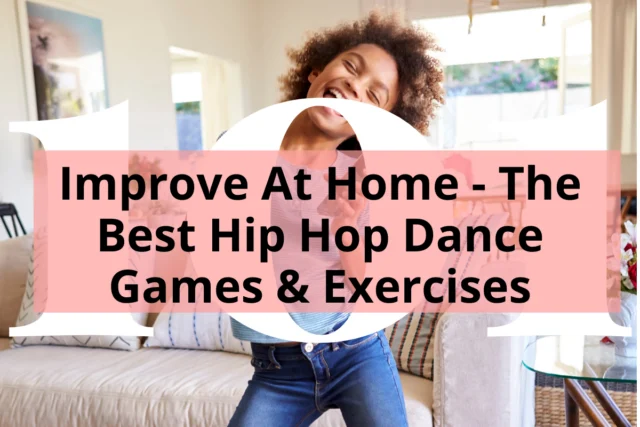By Heidi Williams / Co-Authored & Edited by Samantha Bellerose, B.Ed, Dip.Dance(Performing Arts)
Hip Hop dance is a style of dance that most dance studios and schools offer to teach to their students. It is a style of dance that we often see on TV or social media today. As per it’s name Hip – being current and Hop- being an action or a dance step, hip hop is a currently popular form of dance that many people want to learn.
The 3 original and most well-known styles of Hip Hop Dance are Breaking, Popping, and Locking. Within these types are different forms of dance such as TopRock, Footwork or DownRock, Freezes and Power Moves. You also have the Hip Hop Party Dance genre which is where a lot of the more popular commercial hip hop moves are derived from today!

What parents and dancers should know is that Hip Hop dance performed or taught at your local dance school is going to generally be the commercialized, streamlined, and often diluted form of what hip hop was at its origin and this causes a lot of discontent when discussing what is and isn’t hip-hop between those that live the hip-hop and breaker life.
Many of the more popular Hip-Hop dance moves taught in a hip hop dance class today are derived and come from the Party Dance genre of the style rather than from the original three styles of Breaking, Popping and Locking.
Dance Parent 101
If you are after a concise history of the origins of Hip Hop dance, take a look at our article – Hip Hop Dance History.
What are the five types of Hip-Hop Dance?
For the most part, the 3 original styles of Hip Hop dance are considered to be Breaking, Popping, and Locking (Campbellocking), as well as Party Dance. Mr. Wiggles, an original Bboy from the streets of New York, member of “Rock Steady Crew”, the “Electric Boogaloos”, “Zulu Nation” and TC5 (the cool five) Writing Crew (graffiti crew) breaks it down further by stating the basic forms of Hip Hop Dance are:
“BREAKING – ROCKING – POPPING – LOCKING – FREESTYLE (including all party style dances born from Hip Hop Music)”
Wiggles.biz
1. Breakdance & Rocking

The term Breakdance is actually a term coined by the media in the 70’s to describe this new form of dance. The original dancers of this style were known as Breakers or Bboys and Bgirls. The main elements of Breaking are Toprock, Go-Downs, Downrock (Footwork), Freezes, Power, and of course freestyle.
“The term “break” had more than one use in the 70s. It was often used as a response to an insult or reprimand, for example, “Why are you breakin’ on me?”
Break was also the section on a musical recording where the percussive rhythms were most aggressive and hard-driving. The dancers anticipated and reacted to these breaks with their most impressive steps and moves,” (Pabon).
For a detailed look at Breaking check out our article which includes information on all the elements and a little history as well!
2. Locking (Campbelllocking)
Every mistake is merely an opportunity to recreate, and no one understood this better perhaps than Don Campbell who created Locking by mistake.
Locking originated on the West Coast of the US and really began to evolve as a form and style of dance during the 60s and 70s. Most hip-hop historians acknowledge Don Campbell as being the creator of locking and the origin story goes that it was born whilst he was in the middle of a dance performance.
He was attempting to do the robot shuffle and/or funky chicken and he forgot what the next step was, so he froze on stage. When a woman in the audience laughed Campbell became annoyed at himself (or her), and he pointed at her to take the attention off himself. The audience, thinking this was part of the routine all looked at her. He would point back and laugh at whoever was laughing at him, and the point or the lock was an instant hit.
“So Campbell converted his failure into a success – and the audience’s mocking created Locking – one of the most popular funk and hip hop dance forms in the world today. What began as just a simple mistake in a fad dance became a whole phenomenon that swept the streets of LA and the world”. (Trina)
Locking is characterized by locks, wrist rolls, and rigid stops in contrast to fluid grooves, Uncle Sam points, lots of humor, and audience interaction. Don Campbell himself once stated, “The best dancers don’t always win –it’s the best entertainers [that do].” He also once said, “Take the dance and make it your own! Can’t nobody beat you at being you!”(PacificRimVideoPress). Truer words were never said. Just like all other styles of hip hop dance, Locking is freestyle based, requiring a dancer to feel the music and add their own individuality to the foundational moves.
When I was out on that floor, I wasn’t trying to come up with steps then name them. That’s not and has never been what my dance was about. That’s not how creativity works. You got to let it flow. And whatever comes out is you being you.
Don Campbellock
3. Popping
Popping is an umbrella term (we’re talking, a humungous umbrella) that is generally thought to include a variety of substyles. To be clear, many of these related styles are categories of their own, and a lot of this is still being debated.
Generally, though, a pop is considered to be a hit to the beat, a tightening of muscles, a stop that is usually executed on the snare drum hit, and sometimes also the bass drum or other beats in the music.
Popping originated in Fresno, California in the 60s and 70s with Boogaloo Sam being at the forefront, and the group he formed The Electric Boogaloos. “Boogaloo – a style of dance where the dancer tries to give the impression that their body is lacking bones. The dance is loose, fluid, and mimics cartoons or animated movies. The dance involves circular rolls of hips, knees, and head”(LAStreetDance). In juxtaposition to this fluidity is dime stops, where the dancer stops on a dime or comes to an immediate, sudden halt.
Often combined with popping to the beat are substyles of Animation, Bopping, Botting (Robot), Crazy Legs, Hits, Miming, Puppet, Strobing, Ticking, Waving, Gliding and Tutting. Again, this is not a complete list, by any means, but a very brief summary. An article could be written about each component listed here, (we will get onto that one day!)as most of are styles in their own right!
4. Freestyling

Freestyling is another word for improvisation. It is when a Hip-Hop dancer creatively puts together various elements of hip-hop on the spot, inspired generally by the beat and music. They may incorporate previously choreographed phrases, linking them with familiar moves or experimenting with different dimensions of the movement such as making it fluid or popping then locking, taking it from toprock to downrock adding spins, twists or even acrobatics depending on where the music and the improvisation takes them.
In this day and age as the talent of dancers continues to skyrocket, it’s easy for them to be able to execute hip hop choreography the way a choreographer demonstrates it, but without the knowledge of the History of the movement, without the groove that comes from feeling the rhythm, and without the soul that weaved those beats together musically!
Hip-Hop dance comes from a feeling within, from matching those feelings to the rhythm that you hear and then expressing those emotions through your movement. That is what true freestyle is all about. How can you expect your audience to feel you if you don’t feel you? How can they feel the beat if you don’t?
Another characteristic of Hip Hop Dance that goes along with freestyle is taking part in cyphers and battles. This is a common thread that has been braided through Hip Hop Dance since the beginning. Today battles have become more sophisticated with dancers and teams creating choreographic routines that they pull out dependent on what the other team or person in the battle has thrown at them, but sometimes especially when the battle is solo it is all freestyle!
5. Party Dances
As Hip Hop was appearing all over New York, large block parties and jams were fueling the sensation of the hip-hop dance movement. Less competitive dances started to appear at these parties as more of a social, just for fun type of dance that everyone could follow along and join in doing.
Examples of some of these party dances were the Cabbage Patch, Running Man, Roger Rabbit, Happy Feet, Harlem Shake, and the Snake. Party dances are still happening today, with some examples being the Whip, Nae Nae, Flossing, the Shoot, and the Soulja Boy –just to name a few.
Samantha our director here at Dance Parent 101 can remember having to memorise these ‘party’ moves for a Hip-Hop exam at her full time dance school in the late 1990’s showing how these steps became the staples of what many dance studios and schools consider to be hip-hop dance!
THE FUTURE OF HIP HOP DANCE TODAY
It seems the future of hip hop dance is heading down a tik tok path if you know what I mean! It also seems that with Breaking becoming an Olympic Sport in France in 2022 that this style is breaking away from it’s origins as a style of hip hop into its own category of dance all together!
Staying true to Hip Hop origins is becoming harder and harder as most of society embraces and copies hip hop dance for commercial and entertainment purposes. But hopefully with more and more awareness and credit being given to the true creators of many hip hop style dances on social media platforms such as Tik Tok (please always tag or identify the choreographer of the dance you are copying for Tik Tok, not just the music you use!) and with Choreographers like JaQuel Knight fighting for rights over original choreography – did you know he is the first choreographer to have a non-ballet choreographic work approved for copyright registration (Single Ladies Choreographed for Beyonce) – Hip Hop will continue to thrive true to its original form and cultural origins.
Current Point of Interest!
For those interested in seeing one-way Hip Hop is evolving at the roots and from the young people living with daily struggles of twentieth-century life why not check out the true street battles that still continue to happen, with crowds standing around in parks, the street or even at parties. It is truly fascinating in this day of Instagram and tiktok that you can be a viewer and participant in the evolution of hip hop from the places where it truly is the culture and way of life, because whether it be hashtagged as #jerseyclubmusic or #baltimoreclubmusic if you stop and take notice you can see the evolution of hip hop dance happening before your eyes!
Notes from the writers…
*This article about Hip Hop dance is in no way meant to be a full description, list, or conclusive text. There are many, many other styles of Hip Hop or related to Hip Hop that aren’t even mentioned here, and for the sake of brevity, couldn’t be mentioned.
Blessings. ~Heidi & Samantha
Websites I recommend you visit to further your knowledge and understanding of Hip Hop Dance
Price, Walter, and By. “In His Own Words: Krs One – Definition of Hip Hop ⋆ Global Texan Chronicles.” Global Texan Chronicles, 4 June 2017, globaltexanchronicles.com/words-krs-one/.
Clemente, Stefan Wiggles. What Are Hip Hop Dances, wigzee.biz/blog/?post=what-are-hip-hop-dances.
Pabon, Jorge. Physical Graffitti…the History of Hip Hop Dance BY Popmaster Fabel, of the RockSteadyCrew, Zulu Nation. https://www.daveyd.com/historyphysicalgrafittifabel.html
Adelekun, Emmanuel. “These Are the Basic Elements of Breaking.” Red Bull, Red Bull, 2 July 2021, https://www.redbull.com/us-en/understand-the-basic-elements-of-breaking
Rajakumar, Mohanalakshmi. Hip Hop Dance (The American Dance Floor). Greenwood Publishing Group, 2012 (Find this book on Amazon through out Affiliate Link here)
Ma, Jessie. “What Is Hip Hop Dance? Learn the History & Moves at Home.” STEEZY Blog, www.steezy.co/posts/what-is-hip-hop-dance
Trina. “A Brief History of Locking: The Lock and Short of It.” Hiphop.org.au, 2 Apr. 2021, https://hiphop.org.au/a-brief-history-of-locking-the-lock-and-short-of-it/
PacificRimVideoPress, director. YouTube, YouTube, 9 Aug. 2015, www.youtube.com/watch?v=qROnQORvHHc
“Hip-Hop: A Culture of Vision and Voice.” Hip-Hop: A Culture of Vision and Voice, www.kennedy-center.org/education/resources-for-educators/classroom-resources/media-and-interactives/media/hip-hop/hip-hop-a-culture-of-vision-and-voice/.
“Popping.” LA Street Dance, blogs.uoregon.edu/jerkrumpop/popping/.

